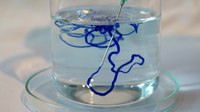
Photo from wikipedia
The aim of the study was to describe the effect of fibre type on the fatty acid profile and lipid oxidation observed in dry-cured ham produced from individual semimembranosus venison… Click to show full abstract
The aim of the study was to describe the effect of fibre type on the fatty acid profile and lipid oxidation observed in dry-cured ham produced from individual semimembranosus venison (roe-deer, fallow deer, deer and wild boar) muscles. The results indicated that wild boar meat was characterised by the highest percentage of IA fibres and it contained the higher percentage of MUFA, but a low of PUFA and SFA, and was characterised by a(n-6)/(n-3) ratio lower than in the case of deer meat and greater susceptibility to oxidative changes. The highest percentage of SFA, and the lowest of MUFA and PUFA, was recorded in fallow deer meat, which was also characterised by the highest percentage of white fibres. The curing and drying processes increased the percentage share of SFA and the susceptibility of muscle lipids to oxidation, decreased the percentage of PUFA, and caused insignificant changes in the (n-6)/(n-3) ratio of fatty acids. The products were also characterised by a low amount of fat.
Journal Title: Foods
Year Published: 2022
Link to full text (if available)
Share on Social Media: Sign Up to like & get
recommendations!